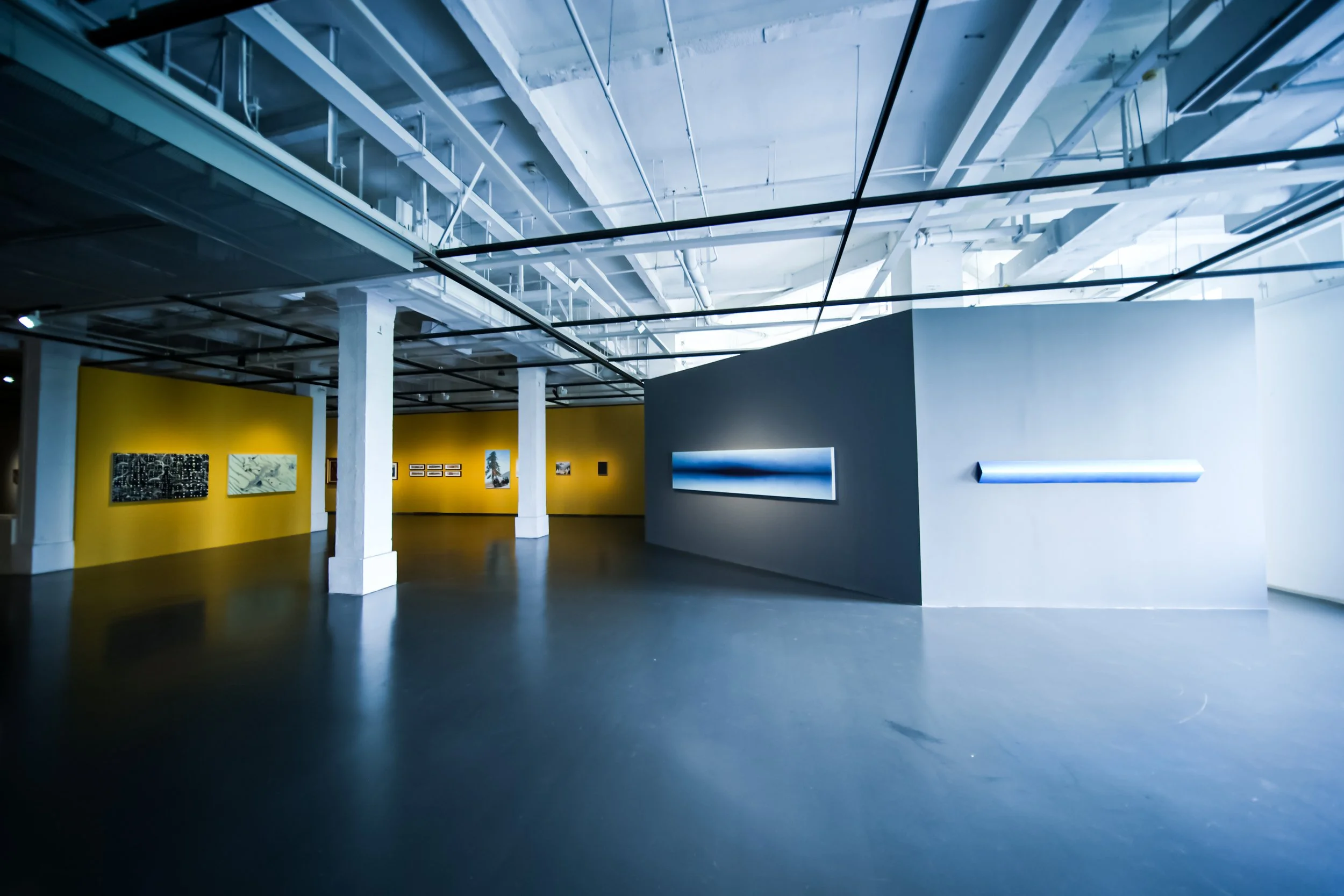Exhibition Period
19th April 2025 – 30th June 2025
Venue
SGA Three on the Bund, 3F, No.3 Zhong Shan Dong Yi Road, Shanghai
Artists
Ding Yi, Gonkar Gyatso, Gong Yu, Huang Wei, He Xun, Liao Fei, Leonardo Ulian, Lin Haizhong, Pei Zhuangxin, Qu Fengguo, Yoshihiko Ueda, Wang Zixuan, Ye Qing
Planner
Wang Yu, Pema Dorje
Curator
Sheng Liyu
▃
This April, Hushen Art Museum is pleased to announce its exhibition titled "A Path to Enlightenment". This exhibition brings together thirteen contemporary artists Ding Yi, Gonkar Gyatso, Gong Yu, Huang Wei, He Xun, Liao Fei, Leonardo Ulian, Lin Haizhong, Pei Zhuangxin, Qu Fengguo, Yoshihiko Ueda, Wang Zixuan, Ye Qing, brought into dialogue with iconic works from the collection of the Songtsam Museum.
An area of the Hushen Art Museum’s exhibition hall will feature rarely seen artifacts, such as the Buddhist hall relocated from the Songtsam Museum, 13th–14th century Ali Buddha statues, a giant thangka of a hundred Vajrasattva figures, murals from Gongga Chöde Monastery, and vitrolite paintings with iconic Tibetan imagery. Through the dialogue between Tibet and modern society, the exhibition explores alternative visions of modernity and questions how Tibetan civilization might be meaningfully presented on the Bund, a symbolic origin point of Chinese modernity. The exhibition will be on view from April 19 to June 30, 2025.
Phenomenologists argue that our understanding of the world is constructed through consciousness. Human perception operates within the immediate coordinates of time and space, yet the physical objects we perceive—the “five aggregates” in Buddhist terms—function more like app icons on a smartphone: tools designed to optimize user experience (i.e., consciousness), rather than to reveal the underlying code of reality itself (Hoffman, 2000). Time and space may not be objective entities independent of awareness, but rather frameworks through which we interpret the world—far from ultimate truth, or what Kant called the “thing-in-itself”.
Wise thinkers throughout Tibetan history would likely find this notion familiar and agreeable. Modern physics, too, has provided experimental evidence from the quantum level that consciousness affects the physical world. The quantum version of the double-slit experiment, for instance, probes the very core of epistemology: when observation intervenes, the collapse of the wave function is no longer merely a physical event, but one that dissolves the boundary between subject and object. This aligns strikingly with the Yogācāra view that “all phenomena arise from consciousness”. Observing an electron alters its behavior—observation itself becomes an act of creating reality. This idea resonates profoundly with the doctrine that “perception transforms the perceived.” Likewise, at an altitude of 4,000 meters, Tibetan devotees begin each day dedicating merit to all sentient beings, trusting that such mental acts have tangible effects on the material world.
In this light, one could say that artists perform a similar function. Within the interface we inhabit, they generate symbols, illusions, and forms to help us engage more deeply with truth. In Tibetan terms, this is cultivating truth through illusion. The necessity of this lies in the use of the perceptible to awaken that which cannot be seen.
Why, then, would Songtsam—the leading cultural and hospitality brand of the Tibetan plateau—collaborate with Hushen, a landmark of Chinese contemporary art in Shanghai, to host an art exhibition? It is because the wisdom of the highlands is evolving with the times. The image of the Buddha, once preserved in palm-leaf manuscripts and temple murals, now appears on digital screens and in data streams. Can it still hear your prayers? As the saying goes, there are “84,000 Dharma doors”—while the media may change, for those committed to seeking truth, the tools are not the path itself.
Songtsam is not primarily concerned with whether visitors have an unforgettable travel experience. Rather, its deeper intention lies in exploring and communicating the age-old Himalayan worldview: What is the relationship between human beings and nature? Can these ideas be conveyed through travel—or through art?
As viewers exit the exhibition, the chimes of the Bund’s clock tower will still strike with mechanical precision. Yet perhaps someone will begin to sense a hidden resonance within those pendulums—one that echoes the vibration of a monastery drum in Tibet. Perhaps the “secret doorway” need not lie in remote mountains, but can open even within the heart of the everyday world.
▃
About the Artists
Ding Yi(1962, Shanghai, China)
He is a leading figure in Chinese geometric abstraction. His practice spans painting, sculpture, spatial installation, and architecture. Since the late 1980s, he has employed the visual symbol of the cross and its variant “x” as representations of structure and rationality, as well as metaphors for the essence of things. Based on this visual language, he developed the renowned Appearance of Crosses series. He currently lives and works in Shanghai.
Gonkar Gyatso (1961, Tibet, China)
He graduated in the late 1990s with a Master of Arts degree from Central Saint Martins College of Art and Design in the UK. He integrates Buddhist and Tibetan cultural symbols into contemporary life. He is the first Tibetan artist in history to be featured in the thematic exhibition of the Venice Biennale and to have his work exhibited and collected by the Metropolitan Museum of Art in New York.
Gong Yu (1957, Chongqing, China)
She graduated from the Printmaking Department of Sichuan Fine Arts Institute in 1982. She is regarded as one of the founding figures of the watercolor program at the Sichuan Fine Art Institute. Gong Yu is known for capturing the everyday charm and vitality of folk life, expressing it through a poetic and refreshing artistic language. Her works are held in the collections of institutions such as the Zhejiang Art Museum and Hunan Art Museum.
Huang Wei (1985, Inner Mongolia, China)
He graduated from Tianjin Academy of Fine Arts and Tibet University. He has emerged as one of the most prominent rising artists in the field of contemporary art in Himalayan area. Huang Wei’s work blends the artistic traditions of both Han and Tibetan cultures, internalizing the techniques of Tibetan thangka painting.
He Xun (1984, Jiangxi, China)
He is an artist, poet. He graduated from the China Academy of Art in 2006 and currently lives and works in Hangzhou and Beijing. His practice spans painting, poetry, and curatorial work and explores the influence of overlooked or suppressed languages, folk customs, in search of eternal memories, and their gradual decay.
Leonardo Ulian (1973, Italy)
His signature body of work is the Electronic Mandala series. In 2009, he was awarded the Owen Rowley Prize. Ulian’s works have been collected by institutions such as Hermès Group and Fidelity Investments. He currently lives and works in London, UK.
Liao Fei (1981, Jiangxi, China)
He graduated from Shanghai Normal University in 2006. In his practice, Liao explores the relationships and tensions embedded within material substances—between reality and geometry, cognition and mysticism, duality and simplification. While directing attention toward broader conceptual frameworks related to these dynamics, his works also reveal a metaphysical quality inherent in everyday materials. He currently lives and works in Shanghai.
Lin Haizhong (1968, Zhejiang, China)
In 1986, he was admitted to the Landscape Painting program of the Department of Traditional Chinese Painting at Zhejiang Academy of Fine Arts with undergraduate and master’s degree. In 1993, he joined the faculty of the academy. He is currently a professor and doctoral advisor in the Landscape Painting program at the China Academy of Art, as well as deputy director of the Academy’s Center for Calligraphy and Painting Appraisal.
Pei Zhuangxin(1956, Sichuan, China)
In 1971, he began working in Tibet on propaganda and artistic creation. In 1978, he was admitted to the Oil Painting Department of Sichuan Fine Arts Institute and, after graduating in 1982, returned to Tibet. He became one of the most influential Tibetan artists of the 1980s. He currently resides in both Beijing and New York.
Qu Fengguo(1966, Liaoning, China)
In his paintings, Qu consistently explores themes related to the perception of time, memory, forgetfulness, and other life-related reflections. The artist "cancels" the conventional painting tools, instead using his fingers, the movement of his body, and the natural motion of the paint itself to create a visual representation of temporality.
Yoshihiko Ueda (1957, Japan)
Yoshihiko Ueda became a freelance photographer in 1982 and gradually established himself as one of Japan's most successful photographers in the advertising industry. His work carries a highly personal and refreshing style, spanning both artistic and commercial photography, and has received international acclaim.
Wang Zixuan
Wang Zixuan is an artist who uses oil painting to explore and express Eastern spirituality. Eastern artists have long sought to understand the spiritual concept of "being" and "nothingness," and Wang Zixuan, with a pure heart, has devoted herself to studying Han stone reliefs and cave sculptures.
Ye Qing (1977, Zhejiang, China)
He graduated from China Academy of Art and currently teaches at Zhejiang Sci-Tech University. In his painting, Ye uses snapshots as the foundation for his works, employing a meticulous and neutral approach to depict both the human and natural landscapes of the city, as well as the people and objects in daily life. Through this, he reflects the pervasive influence of consumerism on contemporary life.
▃
Gallery














